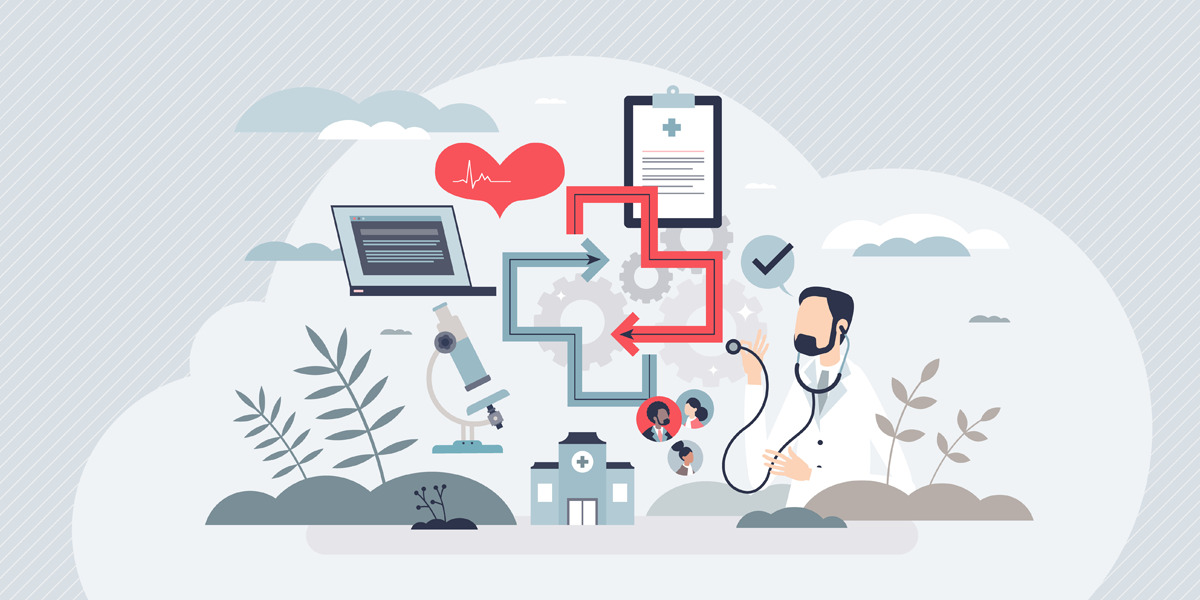The Importance of Healthcare IT Interoperability

Interoperability, in the context of healthcare, embodies the capability of diverse health information systems and applications to converse, exchange data, and deploy the shared information effectively. As we sail deeper into the digital age, the healthcare sector is at the helm of rapid digitization. This digital transformation underlines the urgency for interoperability as a cornerstone to elevate the quality of care, curtail expenses, and place patients at the center of their health journey.
Defining Healthcare IT Interoperability
At its core, healthcare IT interoperability is about seamless communication and information sharing across the complex ecosystem of electronic health records (EHRs), medical devices, imaging systems, laboratories, pharmacies, and other technology platforms that capture and manage patient data. Interoperability allows this data to be exchanged securely in a standardized format that can be used by the receiving system, application, or platform.
Healthcare IT interoperability has several levels:
- Foundational interoperability: The basic ability for two or more systems to share and interpret data based on common standards.
- Structural interoperability: Data can be shared between systems in a structured manner using agreed upon data formats, terminology, codings, etc.
- Semantic interoperability: Systems can automatically interpret the meaning of exchanged data and use it seamlessly without human interaction.
Why Interoperability is Critical for Healthcare
When healthcare organizations have interoperable systems, providers can access comprehensive patient records from across care sites to make fully informed decisions about treatment plans. Interoperability also streamlines clinician workflows by reducing duplicate tests and eliminating delays in tracking down patient history from external organizations.
Additional benefits of healthcare IT interoperability include:
- Improved care coordination between partners to enable seamless care collaboration.
- Better care transitions through reliable data exchange between care settings.
- Aggregation of population health data to allow analysis of treatment effectiveness patterns.
- Enhanced patient engagement by enabling access to their own records from multiple providers.
Overcoming Healthcare Interoperability Challenges
While progress has been made, significant obstacles remain to fully interoperable health data exchange nationwide:
- Information blocking when organizations intentionally prevent sharing of health data.
- Vendor barriers arising from proprietary technology standards that inhibit cross-platform data exchange.
- Privacy and security concerns about exchanging patient data securely.
- Legacy IT systems not designed for interoperability that can be difficult to connect.
- Data standardization problems due to variability in terminology, coding, and clinical data formats.
- Cost barriers for transitioning to interoperable systems, which requires major investment.
Overcoming these challenges requires cooperation among healthcare stakeholders to align incentives, adopt open standards, modernize systems, and build trust. With concerted effort, the vision of seamless healthcare data exchange can become a reality, leading to healthier patients and lower costs.
The Path Forward for Interoperability
In the years ahead, we must continue accelerating the adoption of interoperable technologies and health information exchange networks. Key focus areas include:
- Incentivizing providers through reimbursement models that reward meaningful interoperability.
- Promoting industry-wide adoption of health IT interoperability standards and open APIs.
- Improving patient data matching through unique identifiers and demographics mapping.
- Enhancing security protocols and governance for health information exchange.
- Transitioning away from legacy systems toward modern interoperable platforms.
- Developing frameworks for semantic interoperability and clinical data normalization.
The healthcare industry has made significant strides in adopting interoperable health IT systems and establishing data exchange networks. However, realizing the full vision of seamless nationwide health data liquidity will require persistent effort and collaboration among all stakeholders. By incentivizing interoperability adoption, establishing open standards, addressing privacy concerns, and investing in new technologies, we can overcome the remaining barriers. Interoperability is imperative for improving care coordination, engaging patients, developing learning health systems, and managing population health. The path forward will necessitate both top-down policies and bottom-up innovation. With concerted industry-wide commitment, we are poised to unlock the breakthrough potential of healthcare interoperability. Ultimately, this will elevate the quality, safety, and efficiency of care delivery across the entire health system.
Interoperability will continue to play a vital role for health systems modernizing their IT infrastructure and breaking down data siloes from their major systems, like EHR, ERP, HCM, CRM etc. Healthcare IT Leaders can help assess your organization's IT infrastructure and provide digital transformation consulting expertise and experienced staff to more efficiently share data across once disparate systems.